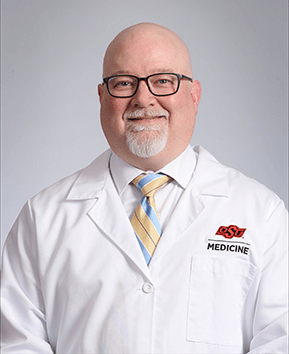
Diabetes Awareness: Recognizing the Signs and Taking Control of Your Health
Diabetes affects 38.4 million people in the United States, which is about 11.6% of the population, according to the CDC. Even though it’s very common, there are still many misunderstandings about it. Jeremy Johnson, PharmD, a board-certified diabetes specialist at OSU Family Medicine, shares what patients should know about diabetes.
What is the difference between Type 1 and Type 2 Diabetes?
Type 2 diabetes is the most common type, and likely the one patients think of when they hear the word “diabetes.” It is a metabolic condition where the body either becomes resistant to insulin or doesn’t produce enough of it. It primarily develops in adults, but children can develop it as well.
Type 1 diabetes is an autoimmune condition. Here, the immune system attacks the cells in the pancreas that make insulin, so the body makes little or no insulin on its own. It usually starts in childhood or adolescence and makes up about 10% of adult diabetes cases in the U.S.
What are the risk factors for both types?
Research is still being conducted on the causes of type 1 diabetes, but evidence points to genetic predispositions and family history increasing the risk of developing it.
Type 2 diabetes can develop for many reasons, but a genetic predisposition coupled with poor lifestyle habits contributes. People with prediabetes are at higher risk. Being overweight, not getting enough exercise, and eating an unhealthy diet can all raise the risk. Other health issues, like high cholesterol and family history, also play a role.
What are the signs and symptoms of type 1 and type 2 diabetes?
The symptoms of type 1 and type 2 diabetes are similar due to high blood sugar. They include:
- Increased thirst
- Frequent urination
- Fatigue
- Unexplained weight loss
- Blurred vision
- Numbness in hands and feet
It is important to note that although symptoms are similar, the onset of both types is different. Type 1 develops quickly with severe symptoms. With type 2, symptoms occur gradually, and it can remain undetected for years.
How can patients minimize their risk of developing type 2 diabetes? Can type 1 diabetes be prevented?
Type 1 cannot be prevented, so it is important to watch for symptoms. The risk of type 2 however can be lowered by making healthy choices. Keeping a healthy weight, eating well and staying active all help reduce the risk.
Patients should also visit their primary care provider regularly and get screened if they know they are at risk of developing type 2 diabetes.
What are some common misconceptions about diabetes?
There are several misconceptions about diabetes that contribute to the stigma surrounding the condition.
- Misconception #1: Eating sugar causes diabetes.
- Eating sugar doesn’t cause diabetes itself, but consuming it in excess can contribute to type 2 risk factors.
- Misconception #2: Diabetes only affects people with obesity.
- While obesity is a leading risk factor for type 2, the condition can affect anyone regardless of weight. Genetics and family history are also risk factors for developing it.
- Misconception #3: People with diabetes cannot eat carbs or sugar.
- Eating a balanced diet and monitoring blood sugar in patients with diabetes is important for managing the condition. However, diabetic patients can still enjoy sugar and carbs as long as they plan their meals and enjoy them in moderation.
How can patients with type 1 and type 2 diabetes manage their symptoms?
It is important for diabetic patients to work with their provider to develop a treatment plan. Individuals with type 1 will require insulin to supplement what their body does not produce. Some of those with type 2 will require insulin or another type of medication, depending on the severity.
Outside of medications, lifestyle changes will also help manage diabetes symptoms. Physical activity and a healthy diet, where you monitor carbohydrate and sugar consumption, are also key to symptom management.
What is your advice for newly diagnosed patients?
Being diagnosed with diabetes can be overwhelming and frightening. It’s important to remember that living a full life with diabetes is still possible. With the right care and support, individuals can lead fulfilling lives while effectively managing their conditions. Work alongside your health care team to learn about your options and develop a treatment plan that fits your needs.
Don’t forget to acknowledge the emotional impact of a diagnosis. Mental health plays a vital role in physical well-being, so make time to care for your emotional needs. Nurturing your body and mind is the key to thriving with diabetes.